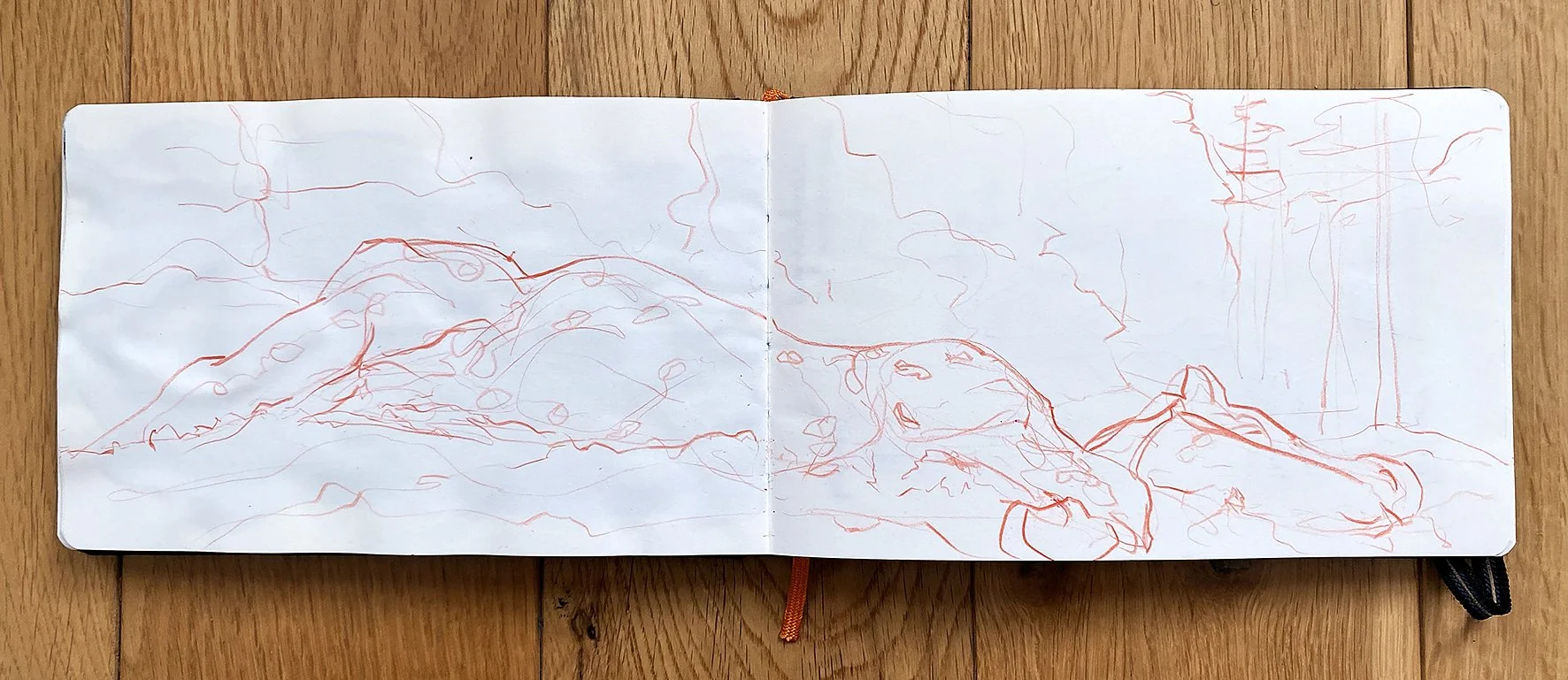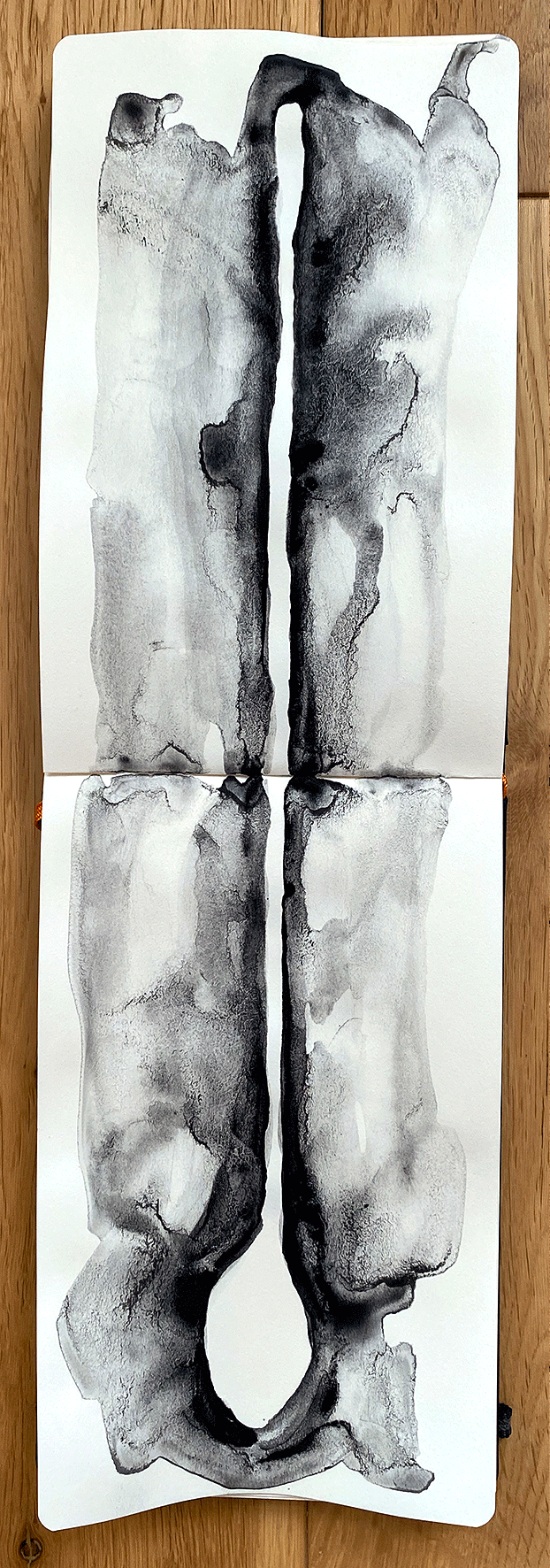I’m trying to pull everything together, I have various notes and ideas, there feels to be strong relationships between the elements I am discovering. So below are my latest notes and thoughts, for my research paper, which may need to change altogether from what I have submitted as a second draft….
Same not the same
"Strategy without finality" Derrida Differance - in Royale Nicholas Jacques Derrida p 153
There is no answer no unifying theory of everything
Change is constant
Territories and the liminal. Liminal Territories.
The liminal is constant change. The passage to transformation.
There will always be change - difference, differance. It brings creativity - progression - Transormation
Theory of incompleteness.
To accept change as a cleansing agent that protects us from structural stagnation.
"The question of difference within any society or culture is always conjunctural, ever-changing, and conditional. “Race” is not a permanent social category, but a historical product of slavery and human exploitation, an unequal relationship between social groups." Manning Marable Essay: https://items.ssrc.org/from-our-archives/black-studies-multiculturalism-and-the-future-of-american-education/
We cannot fill the void
We are incomplete
We will remain incomplete
The Liminal can never be resolved,
located in time
or space
or concept
The passage facilitates change
Movement
Accepting continuous change
Progressive generation.
"As he puts it in an essay entitled 'Ellipsis' (1967): 'Why would one mourn for the centre? Is not the centre, the absence of play and differance, another name for death?" Derrida in - Royale Jacques Derrida p 16
"For, always incomplete, of an incompletion which is not the negativity of lack, [deconstruction] is interminable, an' interminable analysis', ('theoretical and practical', as we used to say). As it is never closed into a system, as it is the deconstruction of the systemic totality, it needs some supplementary afterword each time it runs the risk of stabilising or saturating into formalised discourse (doctrine, method, delimitable and canonised corpus, teachable knowledge etc.)...[Deconstruction would be] afterword to the presence or presentation of the present itself." Derrida in - Royale Jacques Derrida p 145
The paddle as an agent of change/ movement
The presence and nature of change in UVR/artists work. Passage and Transformation.
UVR's Little nothings complete in their incompleteness.
Are her little nothings incomplete?
UVR Haunting of materials - age, presence agency, repetition
"After Derrida, one has to reckon with 'presences' that are neither simply inside nor categorically outside the text" Royal Nicholas, Jacques Derrida P149
Hauntings an 'incomplete presence' in the art, in the materials physicality, treatment and in the movement of the artist 'passaging'.
Neither inside or outside of the art. The meaning neither inside or outside the artwork
See below also 'Included Middle" as key connection, regarding the position of a thing as neither inside or outside.
The First Incompleteness Theorem provides a counterexample to completeness by exhibiting an arithmetic statement which is neither provable nor refutable in Peano arithmetic, though true in the standard model. The Second Incompleteness Theorem shows that the consistency of arithmetic cannot be proved in arithmetic itself. Thus Gödel’s theorems demonstrated the infeasibility of the Hilbert program, if it is to be characterized by those particular desiderata, consistency and completeness.
https://plato.stanford.edu/entries/goedel/
Heisenberg noticed that there are cases where the straightforward classical logic of A and not-A does not hold. He pointed out how the traditional law of Excluded Middle has to be modified in Quantum Mechanics. In general cases at the macro scale, the law of Excluded Middle would seem to hold. Either there is a table here, or there is not a table here. There is no third position. But in the Quantum Mechanical realm, there are the ideas of superposition and possibility, where both states could be true.
The Included Middle is a conceptual model that overcomes dualism and opens a frame that is complex and multi-dimensional, not merely one of binary elements and simple linear causality. We have now come to comprehend and address our world as one that is complex as opposed to basic, and formal tools that support this investigation are crucial. The Included Middle helps to expose how our thinking process unfolds. When attempting to grasp anything new, a basic “A, not-A” logic could be the first step in understanding the situation. However, the idea is then to progress to the next step which is another level of thinking that holds both A and not-A. The Included Middle is a more robust model that has properties of both determinacy and indeterminacy, the universal and the particular, the part and the whole, and actuality and possibility. The Included Middle is a position of greater complexity and possibility for addressing any situation. Conceiving of a third space that holds two apparent contradictions of a problem is what the Included Middle might bring to contemporary challenges in consciousness, artificial intelligence, disease pathologies, and unified theories in physics and cosmology.
https://www.edge.org/response-detail/27155
///
Draw on paddle with clay?
UVR Transformation of materials in form and concept?
What is this deep love of materials for her?
A strong sense of history and of time passed.
"I always have a specific vision of what I want in my head, because otherwise I wouldn’t be able to start. Other than that, I rely on instinct. I honestly don’t understand it, but I also know something else so clearly. Earlier today, I was working on a required legal document and I felt like a child. I felt so stupid in regard to my lack of understanding and the fact that I don’t want to understand them, but I have to because I’m grown-up, or whatever. I feel completely different in the world where I make my art… it’s so clear to me that this is what I was born to do. And it’s not as though anything is absolute, or definite, or defined." UVR
https://thecreativeindependent.com/people/ursula-von-rydingsvard-on-how-your-career-evolves-over-time/
"Titles do have a meaning for me, but I don’t want them to have that meaning for anybody else. For this reason, many of the titles I give my works are in Polish and are often not translated. I refer to my sculptures as “bowls” but hate it because they are not bowls. They are an excuse to do all these things that can conceptually feel like fabric, or like the ocean waves. I cannot compete with actual waves, but I can make forms in an entirely new way. Trying my hand at these wave-like structures, I like when there is unexpected movement, or where it does something that it shouldn’t or is not supposed to. It’s as if they misbehave." UVR
https://thecreativeindependent.com/people/ursula-von-rydingsvard-on-how-your-career-evolves-over-time/
When you attended Columbia in the early ’80s, Minimalism was all the rage. Did you ever connect to that movement?
If you made work with a figure, you’d be dead in the water without any hope to show in a gallery. The minimalists were really in power for many years and they had a haughty idea of what was right and what was wrong in art. The minimal look is minus feelings and full of philosophy and erudite high-end talk. It’s so not me, although it’s not that I didn’t borrow from them either. I borrowed the grid from Sol LeWitt, and their use of repetition. UVR
https://thecreativeindependent.com/people/ursula-von-rydingsvard-on-how-your-career-evolves-over-time/
"The grid is my guardian." UVR
https://thecreativeindependent.com/people/ursula-von-rydingsvard-on-how-your-career-evolves-over-time/
"That’s the best thing about art, you can’t label it. You won’t find an answer, ever." UVR
https://thecreativeindependent.com/people/ursula-von-rydingsvard-on-how-your-career-evolves-over-time/
"I come from generations of Polish peasant farmers. I’ve always been inspired by their tools and wood piles. There is nothing that is superfluous." UVR
https://thecreativeindependent.com/people/ursula-von-rydingsvard-on-how-your-career-evolves-over-time/








































